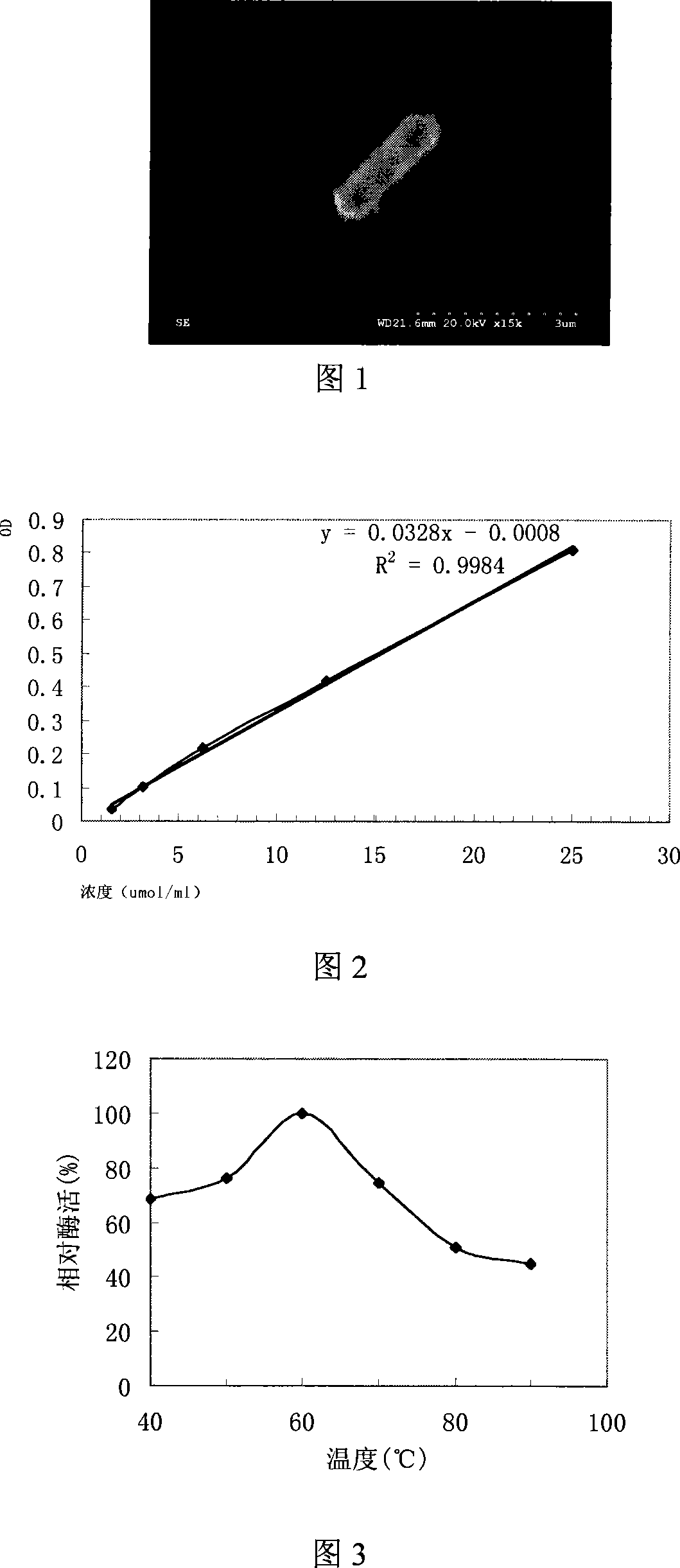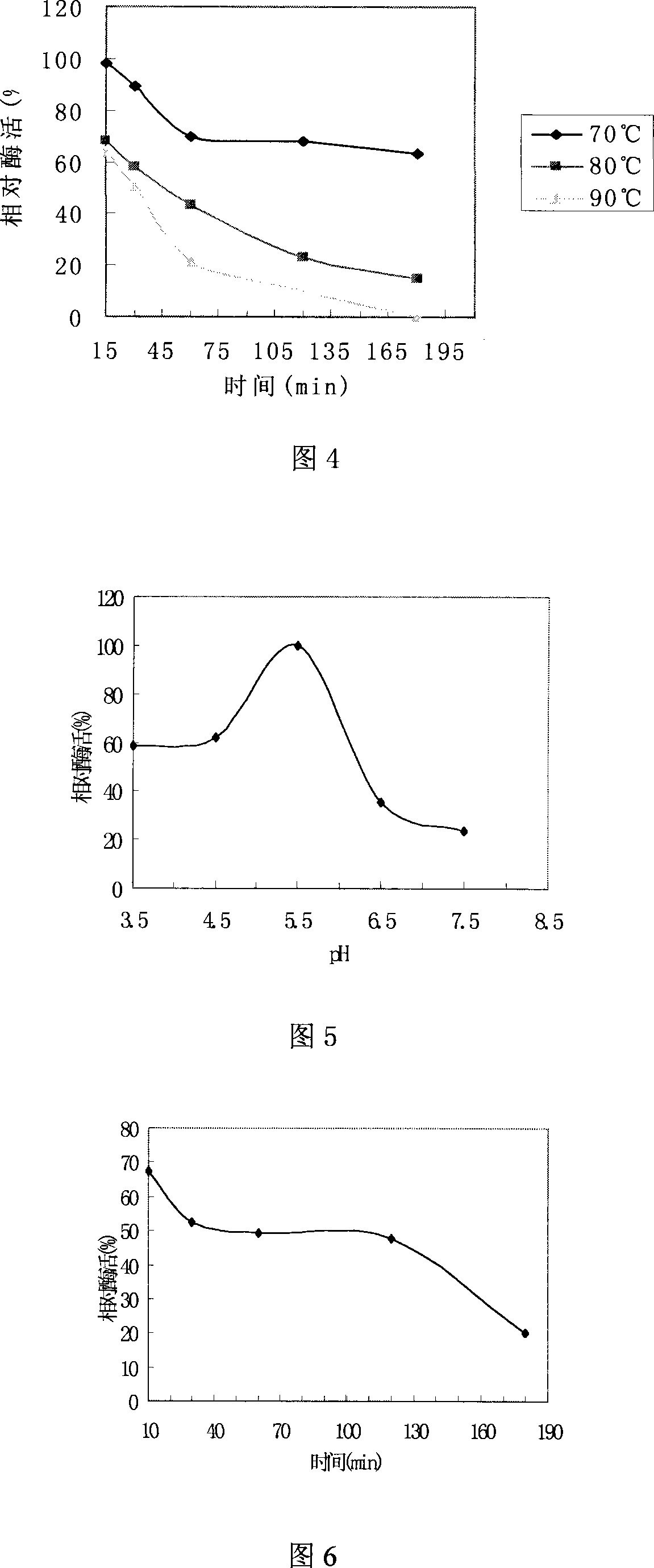Generation bacterium of heat-stable phytase
A technology for producing phytase and bacteria, which is applied in the field of microorganisms and can solve problems that hinder wide application
- Summary
- Abstract
- Description
- Claims
- Application Information
AI Technical Summary
Problems solved by technology
Method used
Image
Examples
Embodiment 1
[0035] 1. Isolation of strains
[0036] Water samples from the hot springs in Tengchong, Yunnan, China are directly coated on the primary screening medium plate and cultivated at 50°C for 3-5 days, observe the growth of the transparent circle, and select the strain with a large H / C ratio (H / C is the diameter of the transparent circle H and the colony) Diameter C ratio), select large and obvious colonies with transparent circles, separate and purify by streaking 2-3 times; after purification, put the strains into the liquid fermentation medium shake flask for fermentation, and ferment under the conditions of 37°C, 200, and rpm After 5 days, further screening was carried out, and finally the strain producing thermostable phytase was isolated and screened.
[0037] Media used
[0038] Primary screening medium: glucose 3.0g, NH 4 NO 3 0.5g, MgSO 4 0.003g, distilled water 100ml, calcium phytate 0.5g, agar 2g, pH5.5.
[0039] Liquid shake flask fermentation medium: peptone 1....
PUM
 Login to View More
Login to View More Abstract
Description
Claims
Application Information
 Login to View More
Login to View More - R&D
- Intellectual Property
- Life Sciences
- Materials
- Tech Scout
- Unparalleled Data Quality
- Higher Quality Content
- 60% Fewer Hallucinations
Browse by: Latest US Patents, China's latest patents, Technical Efficacy Thesaurus, Application Domain, Technology Topic, Popular Technical Reports.
© 2025 PatSnap. All rights reserved.Legal|Privacy policy|Modern Slavery Act Transparency Statement|Sitemap|About US| Contact US: help@patsnap.com


